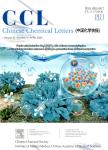Cell-penetrating riboflavin conjugate for antitumor photodynamic therapy
Cell-penetrating riboflavin conjugate for antitumor photodynamic therapy作者机构:Guangdong Key Laboratory of NanomedicineInstitute of Biomedicine and BiotechnologyShenzhen Institute of Advanced TechnologyChinese Academy of SciencesShenzhen 518055China University of Chinese Academy of SciencesBeijing 100049China Department of Biomedical EngineeringSouthern University of Science and Technology(SUSTech)Shenzhen 518055China
出 版 物:《Chinese Chemical Letters》 (中国化学快报(英文版))
年 卷 期:2022年第33卷第9期
页 面:4339-4344页
核心收录:
学科分类:1002[医学-临床医学] 0703[理学-化学] 100214[医学-肿瘤学] 10[医学]
基 金:supported by the National Natural Science Foundation of China(Nos.21977111 and 22007096) the National Key Research and Development Program of China(No.2021YFA0910000) the Natural Science Foundation of Guangdong Province(Nos.2019A1515012073 and 2018B030308001) the Shenzhen Science and Technology Innovation Commission(No.JCYJ20210324120200001)
主 题:Riboflavin Antitumor Photodynamic therapy Cell-penetrating peptides
摘 要:Riboflavin(RF,vitamin B2)is an essential vitamin and has been considered as a promising natural photosensitizer for photodynamic therapy(PDT).However,further exploration of RF in antitumor application was limited by its poor cellular *** this study,using cell-penetrating peptides Arg8,(Cha-Arg)3 and small molecule triphenylphosphine(TPP)as delivery compounds,three RF conjugates were prepared to increase the accumulation of RF in cells,termed as Arg8-RF,(Cha-Arg)3-RF and TPP-RF,*** with TPP-RF and Arg8-RF,(Cha-Arg)3-RF exhibited better cell internalization and stronger cytotoxicity against HeLa cells upon exposure to blue *** researches proved that(Cha-Arg)3-RF generated reactive oxygen species(ROS)under irradiation,which could indiscriminately destroy endogenous proteins and mitochondria,ultimately inducing cell *** work provides a new approach to explore RF as a natural photosensitizer for antitumor photodynamic therapy.



